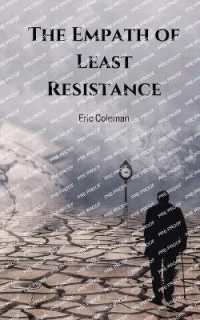- ホーム
- > 洋書
- > 英文書
- > History / World
Full Description
A major reassessment of the British government's communication of the goals of World War II and how its propaganda undermined the people's faith in the reliability of war news and the credibility of political leaders.
While waging war against enemies overseas, governments also need to win the hearts and minds of their own citizens. The media is critical to delivering the official message, raising public support for war, maintaining morale, spelling out what is to be achieved, downplaying setbacks, and presenting a bright vision of the postwar future. In public memory, the British people were united in their support for World War II. Yet this popular image of the People's War neglects the fact that the war had to be sold.
In this work stretching from appeasement in 1938 through victory, award-winning historian Steven Casey examines how media, government, and armed forces worked to convince the British public to support the war, as well as the ways the British home front often questioned and challenged the official line. Using a vast array of primary sources, some of them previously untapped, he looks at the broad range of problems and policies that needed to be defended and explained, censored and concealed. The venues range widely from the battlefield to the football field, from the rubble-strewn cities of blitzed Britain to the faraway outposts of Empire. In his chronological narrative of the war, Casey shines light on numerous high-profile episodes, including Munich and Dunkirk, the Battle of Britain and Blitz, evacuation and rationing, and the campaigns in the Africa, Asia, and Europe. Throughout, Casey stresses how the British military forged a relationship with reporters, how this relationship shaped news coverage of the fighting, and how this coverage in turn exerted a profound impact on every other dimension of the government's private and public actions. No one before has examined how all the branches of the armed services kept the home front informed about progress and especially setbacks. Officials, Casey argues, failed to communicate effectively with the British people, which undermined public trust and called the credibility of the political leadership into question. Remarkably, the BBC and Fleet Street sometimes relayed German communiqués to the public because the British government failed to release timely reports of its own.
The Skeptic Isle provides a bold reassessment of how the British government sold the Second World War to the British public. It powerfully showcases how the attempt to mold and manipulate coverage of battles created a major credibility gap that cast a long shadow over the British government's efforts to sell the different dimensions of the Second World War to the home front.
Contents
Acknowledgments
Introduction
1. Appeasement
2. Adjustment
3. Disaster
4. Destruction
5. Fightback
6. Morale
7. Mobilization
8. Empire
9. Allies
10. Return
11. Visions
12. Victory
Conclusion
Notes
Bibliography
Index








